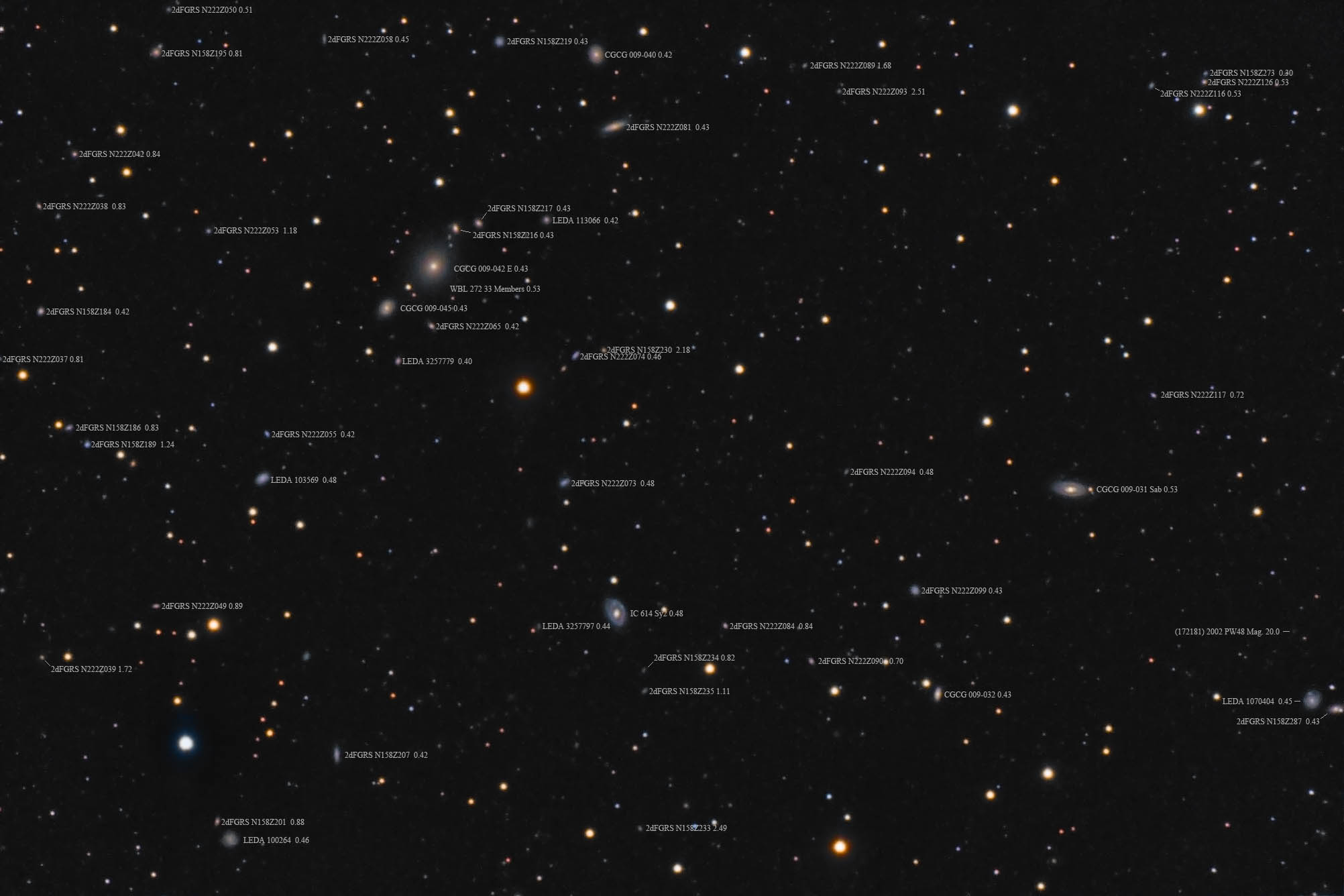Object name: IC0614 IC 614 is a ring galaxy about 480 million light-years distant in the constellation of Sextans. At that distance, it is about 115,000 light-years in diameter. It and many more galaxies in the field are likely members of the WBL 272 galaxy cluster which is listed in NED as having 33 members and a distance of 530 million light-years. It seems to have a double population with some about 420 million light-years away and some in the 530 million light-year range with some like IC 614 scattered in between. There seems to be another cluster at 810 to 890 million light-years. They are likely members of the MZ 03849 galaxy group at 820 million light-years.
I found little on IC 614 other than it is a Seyfert 2 galaxy. It is likely that its Seyfert core and ring structure are the result of a collision or merger in the not too distant past. Unfortunately seeing was awful this night and much of the fine detail in the ring was lost. The red frames were unusable so I retook them on another night that was no better. I ended up using one from each night but the results aren't very good. Yet another for the reshoot list that likely will never happen. I was taking red last on such nights as it is supposedly less bothered by seeing. Unfortunately, it hasn't worked out well for me.
The galaxy was discovered on May 3, 1893 by Stephane Javelle who is responsible for much of the IC catalog having discovered over 2000 nebula of which over 1400 are IC entries using a 30" refractor at Nice Observatory. He died at age 52 in 1917. I wonder if he was a victim of the 1917 flu epidemic that killed millions worldwide? He was an accountant before becoming an astronomer. Being a long retired CPA I have to like this guy.
Quite a few objects are identified in the annotated image but none are quasars for some reason and most are rather close with only three over 2 billion light-years distant. One asteroid is in the image to the lower right. It was virtually at the end of its retrograde motion so moved only a few seconds of arc. I'd have mistaken it for an anonymous galaxy except its position is exactly matched the predicted position and nothing is seen there in the POSS plates.
The largest galaxy in the image is CGCG 009-042, a massive elliptical at 430 million light-years. At that distance, it is over 160,000 light-years across. Its gravity may be anchoring this group to some extent.
14" LX200R @ f/10, L=4x10' RGB=2x10', STL-11000XM, Paramount ME Related Designation(s):2dFGRS N158Z232, 2MASS J10265185-0327530, 2MASX J10265183-0327532, 2MASXi J1026518-032753, 2PIGG NGPGAL B+2.72414-0.05601, 2XMM J102651.8-032754, APMUKS(BJ) B102419.69-031233.5, CGCG 009-039, CGCG 1024.4-0312, GSC 4908 00934, IC 0614, IC 0614:[MNP2009] RN, IC0614, LQAC 156-003 001, MCG +00-27-015, NSA 137339, NVSS J102651-032753, PGC 030699, SAFIRES J102651.90-032753.8, SSTSL2 J102651.87-032752.4, UZC J102651.9-032752, WBL 272-002, [AO95] 1024.4-0312, [KG2002] J102651.89-032752.0 , [VCV2001] J102656.2-032718, [VCV2006] J102651.9-032753, | | 

